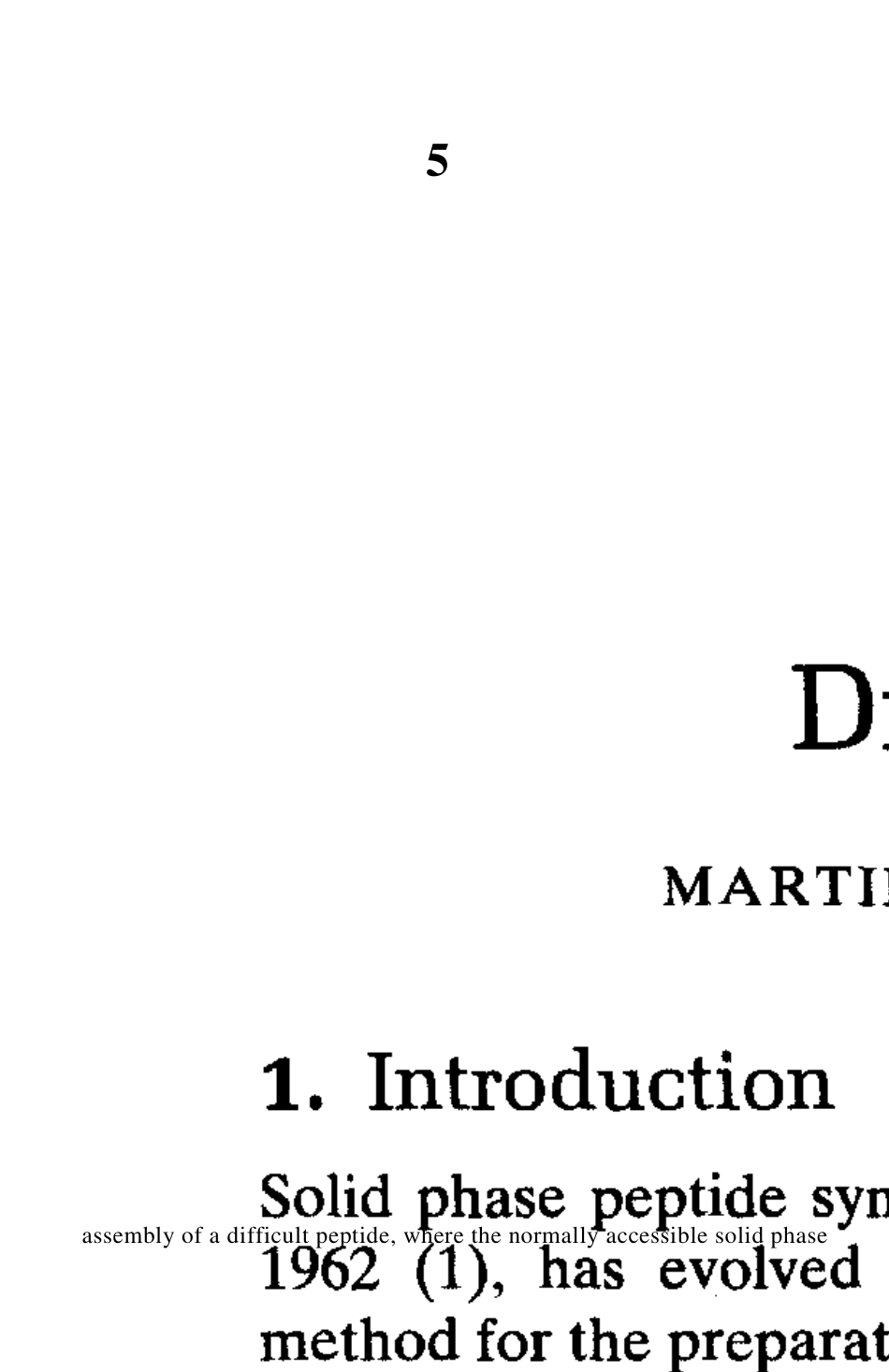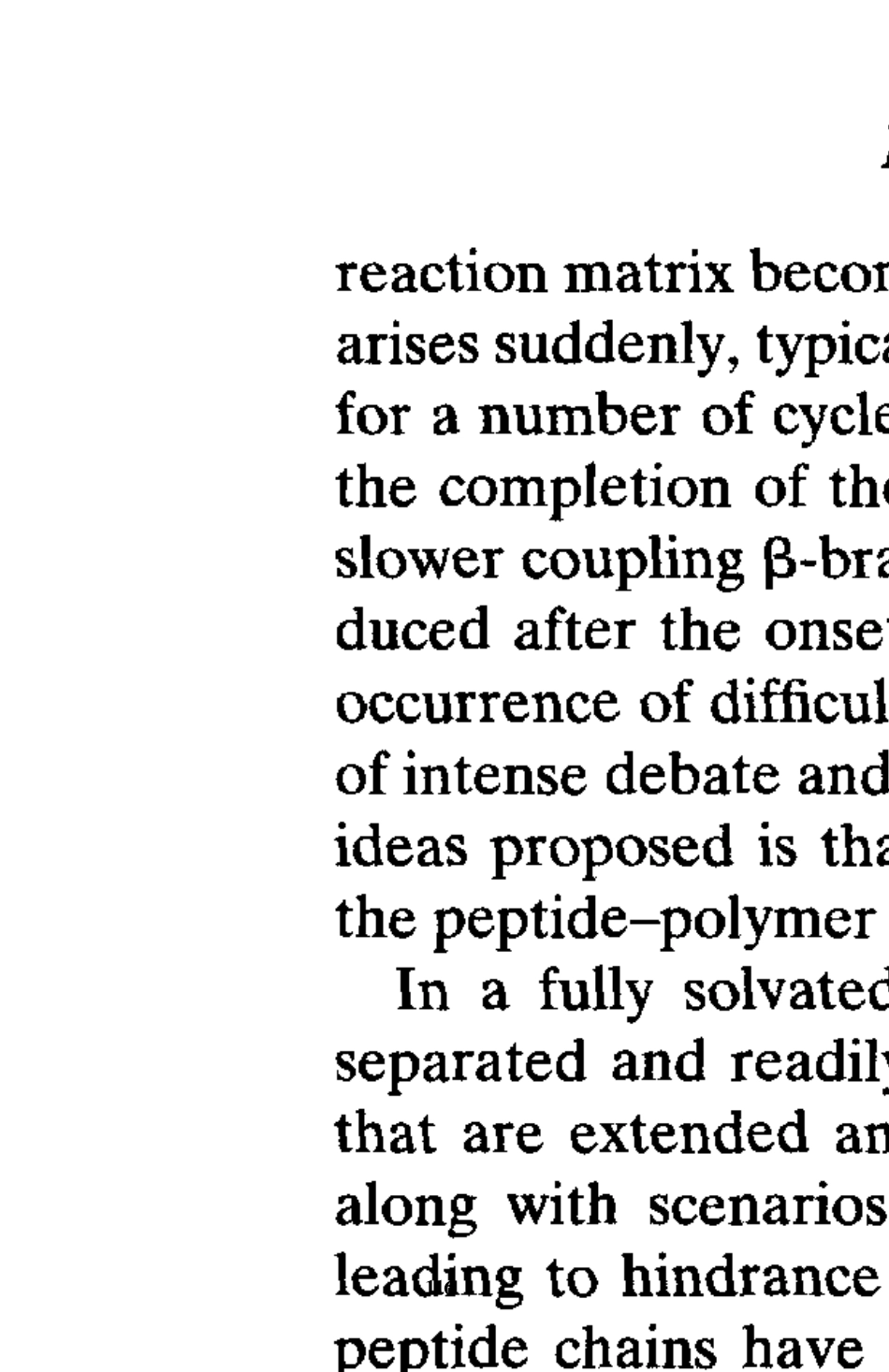Difficult peptidesMARTIN QUIBELL and TONY JOHNSON1. IntroductionSolid phase peptide synthesis (SPPS), first proposed by R. B. Merrifield in1962 (1), has evolved over three decades into a tremendously powerfulmethod for the preparation of peptides and small proteins (2, 3). An absoluteprerequisite for successful syntheses in all solid phase schemes is thatreactions which accumulate solid supported products, and by the very natureof the technique contaminating by-products, must proceed cleanly andefficiently. During the earlier years of SPPS this optimal situation was notalways achieved, primarily due to contaminated reagents and ill-definedpolymers in combination with poorly flexible protection strategies (4, 5). Asthe methods of SPPS gained popularity and more widespread application,reagents and protection strategies were improved and refined (6, 7). How-ever, reports of notable successful syntheses were accompanied by thenunexplained failures, which have since been collectively termed 'difficultpeptides' (8, 9). This chapter describes how an intrinsic understanding behindthe occurrence of 'difficult peptides' has accumulated, leading to a generalsynthetic solution—the utilization of a backbone amide protection strategy.2. Difficult peptides—an overview2.1 BackgroundWithin a few years of the introduction of SPPS, it was recognized that theassembly of some peptide sequences posed a special synthetic problem. Themain feature evident during these syntheses was a sudden decrease in reactionkinetics, leading to incomplete amino-acylation by activated amino acidresidues. The unreacted sites were readily detected by the Kaiser test for freeamine (10); however, couplings showed no significant improvement evenupon repeated or prolonged reaction...


